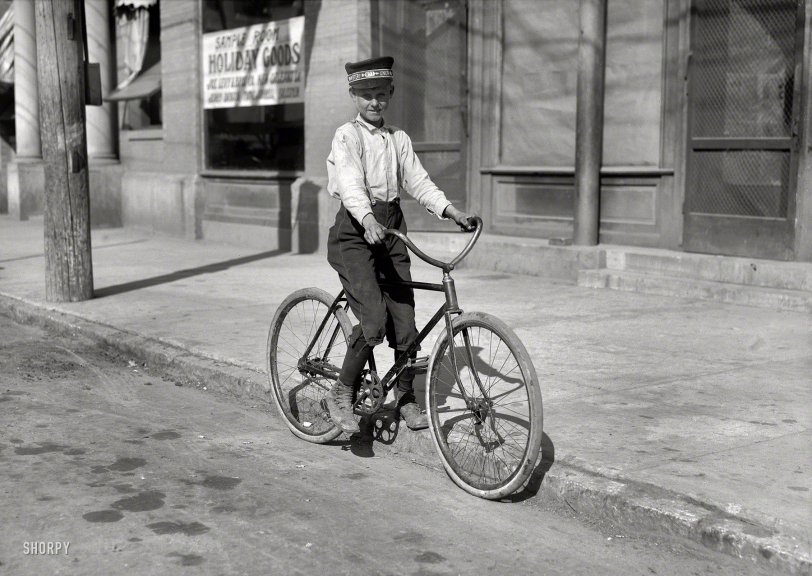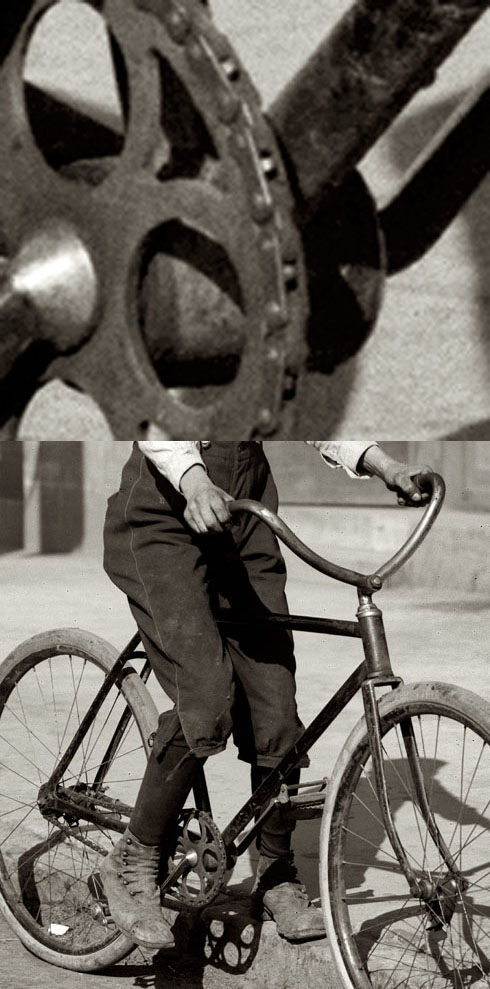


Framed or unframed, desk size to sofa size, printed by us in Arizona and Alabama since 2007. Explore now.
Shorpy is funded by you. Patreon contributors get an ad-free experience.
Learn more.

- Details, Details
- What's that building to the left of the tower?
- Coal Barges
- Bromo-Seltzer
- Inner harbor
- The Basin
- What a headache!
- Giant stepladder?
- Baldwin 62303
- Baldwin VO-1000
- Cold
- No expense spared
- Tough Guys
- Lost in Toyland
- And without gloves
- If I were a blindfolded time traveler
- Smoke Consumer Also Cooks
- Oh that stove!
- Possibly still there?
- What?!?
- $100 Reward
- Freeze Frame
- Texas Flyer wanted
- Just a Year Too Soon
- WWII -- Replacing men with women at the railroad crossing.
- Yes, Icing
- You kids drive me nuts!
- NOT An Easy Job
- I wonder
- Just add window boxes
Print Emporium
Instant Messenger: 1913

November 1913. Shreveport, Louisiana. "Western Union messenger No. 2, fourteen years old. Says he goes to the Red Light district all the time." Glass negative by Lewis Wickes Hine for the National Child Labor Committee. View full size.
Midnight Special
From 1903 till 1917 Shreveport had legalized prostitution confined to a designated Red Light district. This was an area near Fannin street in the St. Paul Bottoms area.
The area was named after a nearby church and the low lying area. St. Paul Bottoms was recently renamed Ledbetter Heights in honor of blues singer Huddie Ledbetter, Lead Belly, who honed his style playing the Bottoms' brothels, saloons, and dance halls. Midnight Special is one of his most famous songs. Maybe Messenger #2 heard Lead Belly play Fannin Street! Selected Lyrics:
My mama told me
My sister too
Said, 'The Shreveport women, son,
Will be the death of you'
Said to my mama,
'Mama, you don't know
If the Fannin Street women gonna kill me
Well, you might as well let me go'
I got a woman
Lives back of the jail
Makes an honest livin'
By the wigglin' of her tail
Even after the optimistic name change the area is still referred to as The Bottoms by many locals and remains one of the poorest downtrodden sections of town.
Red Light
My question has always been with regards to this "red light district" line that Hine usually put with his messenger photos is, are the prostitutes ordering "drugs" and abusing them? Were the drug stores not under strict scrutiny like today? I imagine this to be true. Anyone else out there have any knowledge of this being the case?
[If you were in that line of work, there's one item in particular you might need plenty of that comes from a drugstore. And it's not drugs. - Dave]
Schwinnish
It might actually be a Schwinn. The circles within a circle pattern in the front sprocket is definitely a pattern that later Schwinns used.
And if you look at the shadow you can see that it is a skip-link. On modern bikes the teeth on the sprockets are right next to each other. But on this bike, there is a large gap between the teeth. This is due to the way the chain was made. On modern chains the pattern is hinge, hole for the gear tooth, hinge (ASCII art: *-*-*-). On old bikes the pattern was hinge, hinge, hole for the gear tooth, hinge, hinge (**-**-**-), so there needed to be a big gap between the teeth on the gears.
This concludes Hank's obscure bike trivia lesson.
[Click below to enlarge. - Dave]
Bike to the Future
The cars from 1913 have hardly any resemblance to the ones made these days other than having four wheels and a body, but this bike is within a few percent of a modern coaster brake bike. Sure, a few subtle details are different, but wheels and the drive train could have been made last week.
Telegram for Miss Scarlet
As pointed out in another photo's comment, Mr. L. W. Hine seems to have had a broad assortment of moral axes to grind. I'd be surprised if prostitutes were really frequent recipients of Western Union Telegrams. The bicycle's tires look to be skinny like modern day bike tires are. I guess the big balloon tires as used on the Schwinns that I remember came later.

























On Shorpy:
Today’s Top 5